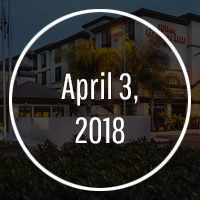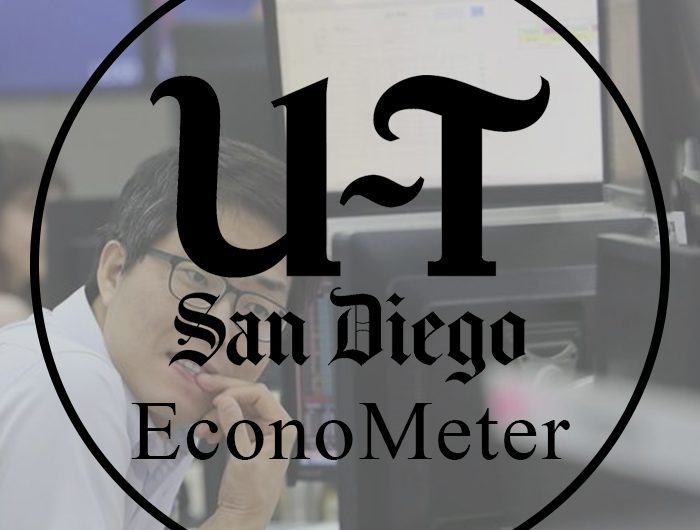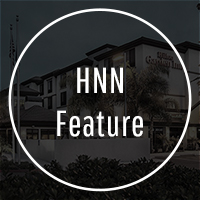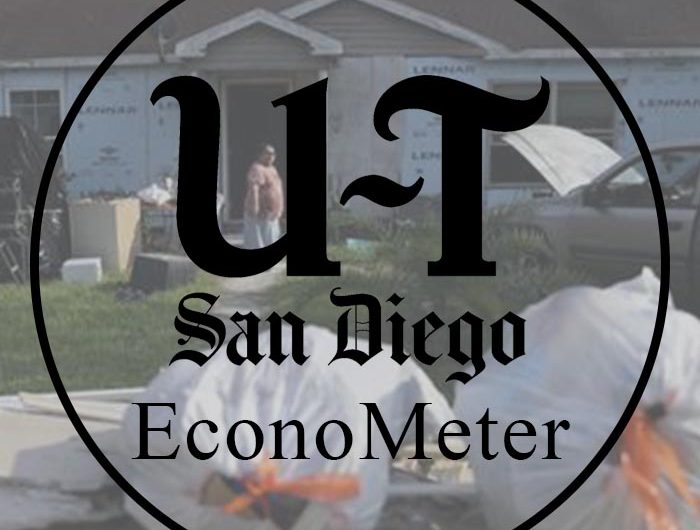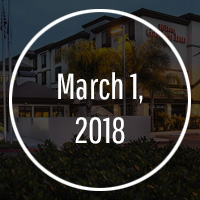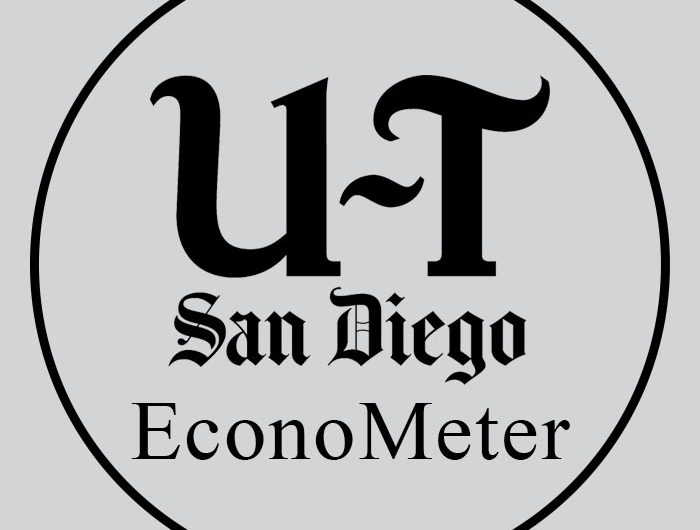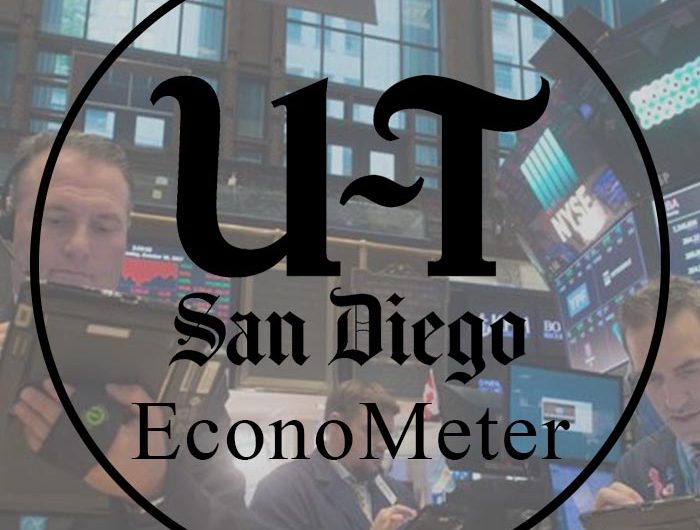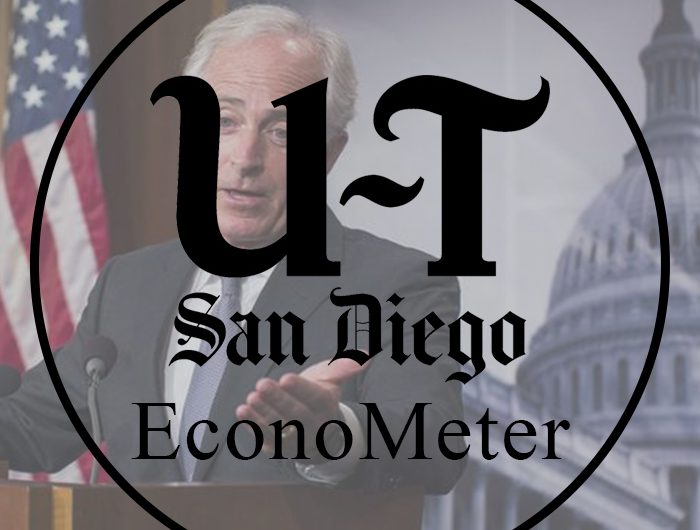Will a trade war (with China and other countries) benefit the U.S.?
Question: Will a trade war (with China and other countries) benefit the U.S.?
Bob Rauch, R.A. Rauch & Associates
NO: China’s exports to America are less than 3 percent of its GDP and the U.S. sends less than 1 percent of its GDP to China. China thinks Americans would object to paying higher prices for manufactured goods from toys to televisions. But other developing countries are supplanting China with low-end production for American consumers. A trade war would be a “lose-lose” proposition and Qualcomm could be negatively impacted. Increase trade with China.
For the full article by Contact Reporter, Roger Showley, click here
Next wave of hotel tech puts guest needs, control first
This article was originally published on Hotel News Now.
Blockchain, guest-controlled hotel rooms and AI are the future of hotel technology.
Hotel technology will continue to be led by mobile, digital room keys and in-room entertainment, but another emerging technology is blockchain.
A continuously growing list of records, which are linked and secured using cryptography, a blockchain is resistant to modification and is an open, distributed ledger that can record transactions such as membership loyalty programs.
In regard to pre-stay communications, we have used Flip.to, which makes it easy for guests with reservations to share deals and tell friends about their upcoming stay.
Another trend worth watching occurs just after rooms are booked. This began with metasearch giant, Kayak, and has led to a lack of room rate growth as hotels deal with the commodity mindset, where guests feel that they can get a better price if they continue to search. Google is adding a price tracker for hotels with which guests can receive price fluctuation alerts after booking, their apparent goal being to become a first-choice booking service rather than solely a search engine.
Once guests arrive, mobile check-in, text and chat take center stage. Mobile check-in has been around for the last few years, but will hit full stride as the technology is refined. If a guest does not utilize mobile check-in by going directly to their room, they will check in at a pod rather than a formal front desk. These pods will be tablet-based kiosks where guests can pick their room directly from their phone and the door lock will be programmed to open only when that mobile device is nearby.
Taking this idea into the rooms themselves, some brands have moved away from traditional guestroom phones and opt for in-room tablets controlling every aspect of the room. Ideally, these two sets of technology will merge so guests can control everything directly from their mobile device.
Texting guests in response to “in-the-moment” needs, security issues and eliminating language barriers are all technologically feasible. Texting provides ancillary revenue streams (we’ve beta tested an “eat, play or shop” app that guided guests to local deals). Chat is already global, and chatbots are AI customer service assistants. Services like Zingle offer automation and communication with guests from one central hub.
The internet of things (IoT) translates the smart home experience into the hospitality world. Technologies such as sensor-activated thermostats, digital room keys and in-room streaming services are all possible today. Getting the IoT upgraded to the network is coming soon and voice activation will be at the top of the list, enabled both by mobile users and Amazon’s Echo or Google’s Home.
The emergence of artificial intelligence into the guest journey is already here. Hotels like Fairfield Inn & Suites San Diego North/San Marcos have had a Relay robot for almost a year. AI is a fast-moving technology enabling machines to perform tasks that previously only humans could.
Robots will continue to impact areas of the guest or associate experience in 2018, a benefit being the data provided as guests utilize the services. In-room technology is vastly different than it was at the turn of the century. Today’s guests expect the in-room entertainment experience to be on demand and better than what they have at home. Additionally, customizable technologies such as custom lighting, smart mirrors and in-room tablets allow hotels to tailor to guest preferences before arrival.
Data and analytics lead to winning the loyalty game. Data can segment guest profiles to infinite degrees, creating a comprehensive picture of who’s staying at our properties. We can track guest habits, interests, preferences, reason for travel, booking date, date of last stay and more. Data and analytics must be mined to measure successes, look for new ways to improve our guest experience and market toward specific demographics. Search engine marketing, optimization and advertising initiatives are crucial to our hotels’ success in this digital age.
Online travel agencies continue to impact our market share and will likely become involved with more guests and their stays. The Expedia Travel Platform will continue their involvement with meeting planners and most likely disrupt other areas soon. OTAs want to own the guest at every step from pre-stay to post-stay. That means we must use caution in embracing them in areas where we can do it ourselves. Perhaps blockchain will be our savior.
Blockchain, which is a clear and incorruptible path from the hotel to the guest, has the ability to create more direct and lower fee transactions. This direct route is a potential disruption to OTAs as they continue to grow and impact our industry. Let’s at least get their commissions back down to the 10% we always gladly paid travel agents. Wouldn’t that be nice?
Is the San Diego County market saturated with luxury new apartment projects?
Question: Is the San Diego County market saturated with luxury new apartment projects?
Bob Rauch, R.A. Rauch & Associates
NO: While there is significant product in the pipeline, especially downtown, the rental market is rock solid. Downtown will only run the risk of saturation if they add rental units without adding jobs. Having said that, there are many strong sub-markets in San Diego that can support luxury apartments. Further, as baby boomers age, there will be a luxury, independent living apartment market that will develop at a rapid pace. The barriers to entry to build in San Diego, coupled with the population growth of our residents bodes well for a balanced market here.
For the full article by Contact Reporter, Roger Showley, click here
Want a hotel brand? How to choose the right franchise
This article was originally published on Hotel News Now.
Considerations for hotel owners shopping for a brand affiliation include things like marketing and direct-bookings power, loyalty programs and OTA agreements.
There are myriad brands out there, and most have a place in the market.
Some are “leading” brands, others are “fair share” brands, while others rest at the bottom of the market share competition, but still bring in more dollars than cost. The remaining “throw away” brands cost as much (or more) than they produce in revenue. We also have membership organizations like Best Western Hotels & Resorts, soft brands that are powered by a brand but don’t display the name publicly, and vacation rental companies like Airbnb.
Strong brands have a powerful reservation system, a high percentage of direct bookings and a successful, global loyalty program. Better brands offer a revenue-management program emphasizing rate and smart positioning strategies, a property management system and a preferred OTA agreement benefiting the franchisee.
Leading brands, like Marriott International and Hilton, have worldwide sales departments managing leads, working with property level executives to fill rooms and marketing each property. They might offer a purchasing network that provides owners with buying power, cost savings and online training programs for employees.
Airbnb and vacation rentals
Airbnb and the vacation rental market have brought together hosts and users in a new way, creating a network of millions of travelers (especially millennials). The experience is different, and service levels vary (which is where hotels can win by differentiation), but overall vacation rentals have enjoyed much success and are always busy during peak demand periods. However, Airbnb will tire of fighting with cities, dealing with the stigma of illegal hotels and being accused of having no insurance, fire/life safety or consistency. My prediction of four years ago still stands: By 2020, Airbnb will become largely an OTA. More commissions, less hassles.
Soft brands
When Hilton and Marriott ran out of room within their traditional brand space and millennials started preferring more unique hotel experiences, soft brands were born. Marriott’s Autograph, Tribute and Edition, Hilton’s Curio, Canopy and Tapestry and many other soft brands were born in the past decade. None of these have endured the test of time, but a robust reservation system will likely power additional strong soft brands. Soft brands do offer plenty of flexibility, but cost almost as much as full brands. Will there be impact on the full brands? Yes, and when that occurs during the next recession, brand conferences will have screaming in addition to the parties.
Brand management
Management by a brand itself can work as a one-stop shop, but is becoming increasingly rare. Why? Brands do not generally provide good management. Yes, there must then be additional relationships (franchisor plus a third-party manager), but I believe statistics would show that a good third-party manager will outperform a brand managing their own label almost every time. There are even third-party operators who “specialize” in certain brands or property types, which makes a decision on who to manage your branded hotel much easier.
Why do we need brands?
The truth is, during times of prosperity, a brand is often an insurance policy. Today, independent hotels can perform rather well, and the expense of having a brand is significant. Brands charge various loyalty program, marketing, reservation and royalty fees. Brand standards can add costs that require significant capital outlays. Having said this, a good brand establishes standards, provides operating manuals, drives occupancy, has powerful brand marketing, strong loyalty programs and quality assurance programs.
Are the benefits worth the cost? According to Robert Braun, partner at law firm Jeffer Mangels Butler & Mitchell, “these standards are designed to benefit the brand, not a specific property. Even if a standard does not add value to a property, the owner is obligated to adopt it. Brand standards are generally inflexible and impose added costs on owners.”
From my experience, some brand programs are ill-conceived. Poor lobby designs, even worse food and beverage programs and concepts designed by individuals who have never worked in a hotel are a few of the challenges of having a brand. I have experienced disastrous results with brands because they assume every hotel, regardless of whether or not it is a conversion or new-build, should have the same design. I am a survivor of a completely botched lobby design in one case and a ridiculous and unnecessary expense in another.
Bottom line
Entrepreneurs have big decisions to make in the hotel space: where to buy or build, and what brand (if any) management by third-party or owner/operator model. The biggest benefits a brand provides are the abilities to get a loan and raise equity and peace of mind during a recession. There are some great brands out there and again, most of them have a place depending on market, property type and cost. Good luck! 2018 will be another great year!
Will Congress’ approval of trillion-dollar federal budget deficits this year and next and perhaps into the future be good for the economy?
Question: Will Congress’ approval of trillion-dollar federal budget deficits this year and next and perhaps into the future be good for the economy?
Bob Rauch, R.A. Rauch & Associates
No: Federal spending at these levels is unsustainable and must be cut sharply now by empowering state and local governments, consolidating duplicative programs and privatizing government programs. Further, eliminating waste, fraud and abuse is much better than cutting military and defense spending. Tax reform was much needed. In other words, spend where it is needed — on our defense and with tax reform that stimulates spending.
For the full article, by contact report, Roger Showley, click here.
Is there an economic price to pay for passing short-lived federal budget resolutions?
Question: Is there an economic price to pay for passing short-lived federal budget resolutions?
Bob Rauch, R.A. Rauch & Associates
YES: Congress always misses the Oct. 1 deadline, resulting in a series of continuing resolutions (CRs) to fund the federal government in the interim. Contentious debate regarding the composition of the CRs creates regular uncertainty. Simplicity makes the prior year’s funding level the most practical option. While not how I handle our business, budgeters who dislike that formula would have added incentive to negotiate a new budget agreement rather than passing short-lived federal budget resolutions.
For the full article by Contact Reporter, Roger Showley, click here
Why 2018 Will Be Great: Hotel Industry Forecast
The big news in 2017 was the stock market, consumer confidence and the economy in general. Tax reform, wage growth, reduced regulations and the strength of our nation could keep this robust economy going and dramatically enhance it. Supply growth has begun to moderate somewhat, in part due to high construction costs and also due to lender restraint.
Oil prices are back up, consumer confidence is solid, interest rates remain low albeit forecast to inch up and the U.S. and global economies seem stronger than last year. Gross domestic product may actually approach 3 percent in 2018, personal income growth is strong and low unemployment together with very strong corporate earnings indicates that both the leisure and corporate traveler have the means to travel and pay for lodging.
There will always be naysayers, so what caveats could stall the economy? We are not immune to any global crisis, politics and outside events. Notwithstanding the aforementioned, 2018 should be a very nice year in every area of hospitality.
U.S. Lodging Industry
U.S. hotels grew revenue per available room (RevPar) at more than a 2.6 percent clip in 2017. This is down from over 3 percent in 2016 but that was somewhat expected, especially considering political gridlock and the number of fires, hurricanes and active shooter events. Low gas prices fueled some growth in leisure travel. Occupancy levels are at a historic high and average daily rate (ADR) represents all of RevPAR growth. We see no reason that the economy cannot stay afloat and thrive in 2018 and keep ADR growth at a 3 percent level, albeit not enough to keep pace with the cost of labor.
New supply is not likely to stop the continuation of positive RevPAR growth for 2018. Banks will begin to put the brakes on lending in time to avoid approving deals that are just too late in the cycle for aggressive underwriting. That means those who are experienced, have solid equity, leading brands or unique ideas, are in great markets and are considered trustworthy and strong borrowers will be able to develop. Increased developer cost of capital, new supply and Airbnb and others in the “sharing economy” are marginally reducing feasibility.
Development economics in many markets will not support new construction.
While these factors might curb supply growth, the “sharing economy” is not going to have a material impact on demand in most markets and International travel is likely to come back as the strength of the dollar drops modestly. Ergo, it will be something else that stops this growth—a Black Swan event or a global meltdown are not likely to occur but could certainly stop this positive growth. Only time will tell but 2018 looks rock solid.
The major forecasting firms, CBRE, PwC and STR are projecting that the U.S. lodging industry will achieve an annual occupancy rate of around 65 percent in 2018. It seems that this will be the year that supply meets demand so there is likely to be flat occupancy levels in 2018. Average rate growth should finish at between 2.5-3 percent, according to the pundits, in line with projected GDP growth. The big challenge might be to reverse some of the trends that hoteliers have been battling relative to high costs of health care, wages and supplies. Further, CBRE has issued a report on reduced labor productivity. Hence, net income may have peaked unless we can successfully reverse these cost trends.
Today’s labor costs represent nearly 45 percent of hotel costs when we factor in worker’s compensation, health care costs and other payroll related expenses so we must hire the best available talent, and they are getting more and more expensive. Distribution costs, due to reliance on OTAs as a direct substitute for poor performance of weak brands and the needs of independent hotels to be relevant, have been increasing, according to Kalibri Labs.
What do these cost increases mean to values? Assuming capitalization rates remain the same, a decrease in net income of $125,000 reduces a hotel’s value by about $1 million. An average limited-service hotel in the U.S. is approximately 90-100 rooms, with revenues of about $3 million and net income or EBITDA of about $900,000. That $125,000 can hit quickly between OTA commissions, labor, health care costs and related expenses. Enough bad news. On the good news side, new hotel lobbies, technology/robotics and improved food and beverage profits are three of the ten trends we identified for 2018. There are many opportunities to grow revenues.
Specific Markets We Follow
Phoenix
Look for continued job growth as Arizona finished 2017 with over 3 million in the workforce and Metro Phoenix surpassed 2 million workers. With Governor Ducey in control, the pipeline for new businesses and expansions is stronger than I have witnessed since arriving in Arizona in 1978. A “stable and predictable business climate, workforce depth, quality of life and education pipeline are the most-cited reasons CEOs have said Arizona beat other states and markets,” according to the Phoenix Business Journal.
With minimal new supply growth, (Tempe is an exception but new corporate growth in that submarket has kept pace with new supply) the Metro Phoenix market will have a very strong 2018. While events like NCAA, Super Bowl, etc. are out of the picture in 2018, Spring Training and other events are still here to boost average rate growth by 3 percent with an additional 1 percent in occupancy growth. We expect occupancy, average rate and revenue per available room to finish at 69 percent, $131 and $90 respectively after a solid 68 percent at $127 and $86 in 2017.
San Diego
San Diego should see continued strength from all market segments. Convention Center groups are down but leisure is up and corporate is stable. Supply is increasing in downtown but demand should absorb most of it. 2017 finished at over 77 percent occupancy and $160 average rate for a RevPar of almost $124. 78 percent is reachable in 2018, largely due to the tough finish San Diego had in December due to wildfires. La Jolla and coastal areas did well with over 5 percent ADR growth last year. We expect to see ADR at $165, up 3 percent from 2017.
Los Angeles
LA finished 2017 at a very respectable 80 percent occupancy, down one point due to the extra occupancy levels picked up due to the Porter Ranch Gas Leak in 2016. Rates were up to over $175 in 2017 from $172 in 2016. Expect solid growth in 2018 with rates rising to the $180 level at stable occupancy. There is new supply coming in, especially downtown. This will begin to have some impact soon.
San Francisco
RevPAR could start to benefit from the Moscone Convention Center gradually coming back on line in the second half of 2018. Group mix overall should also improve as the center completes renovations. Citywide room nights for San Francisco are up 20 percent for 2018. We expect occupancy levels to finish at 84 percent at $245, up over $15 or 7 percent from last year and up almost two occupancy points from 82 percent.
Summary
Despite the record occupancy levels, average daily rate (ADR) growth continues to challenge hoteliers. Factors such as increased supply, low inflation, the sharing economy and rate transparency make it more difficult to raise rates. Other challenges include the lack of buying opportunities available as sellers are not motivated to sell. But the bottom line is that there is great economic news that trumps any worries right now. To a great 2018!
Will San Diego’s recreational marijuana business growth be affected by the Justice Department’s new anti-pot prosecution policy?
Question: Will San Diego’s recreational marijuana business growth be affected by the Justice Department’s new anti-pot prosecution policy?
Bob Rauch: NO
Federal prosecutors will likely focus solely on black and gray markets. While there will be some uncertainty based on Attorney General Sessions’ recent position, there is no reason to expect a crackdown on legal recreational or medical marijuana sales in California.
Sessions was most likely setting up an opportunity for states to be serious about illegal marijuana sales by drug cartels. There will be no impact on recreational marijuana business growth.





